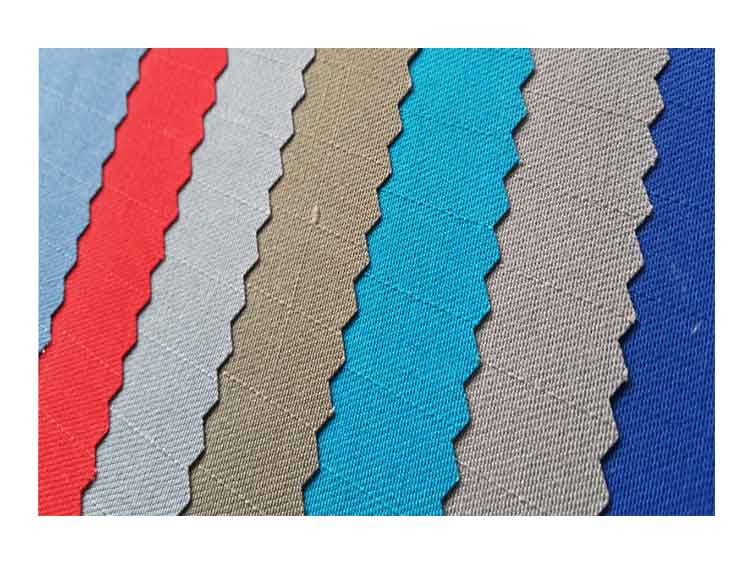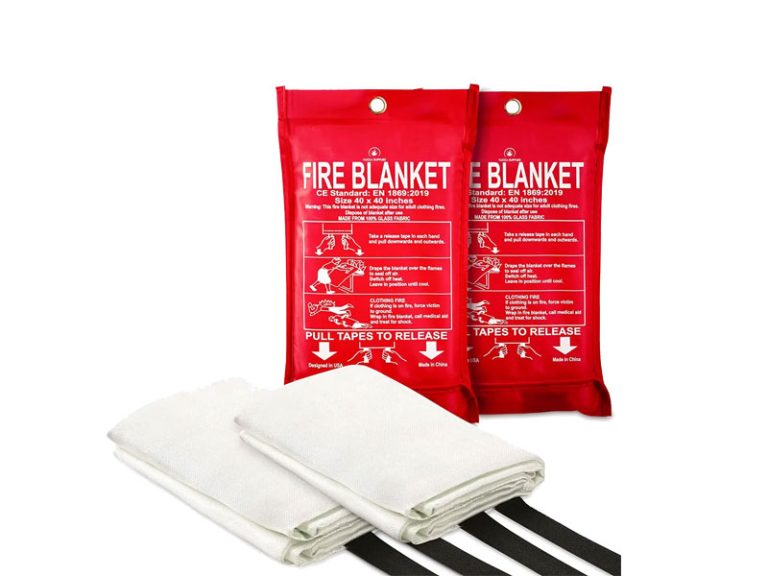If you’re familiar with flame resistant fabric, you’ve probably heard of terms such as treated fabrics or inherent fabrics. However, there are some key differences when talking about flame retardant fabrics or fire retardant fabric. It’s important to know the features and functions of fire-resistant fabric.
In this blog post, we’ll define the terms mentioned above, talk about the differences between flame-resistant and fire-retardant fabrics, common applications of these fabrics, and more.
What is the flame retardant fabric?
A flame retardant fabric is a type of textile that is treated with a flame retardant chemical to help it resist ignition and prevent the spread of fire. Flame retardant fabrics are often used in clothing, upholstery, draperies, and other applications where they may be exposed to flames or heat.
The main purpose of using flame retardant fabrics is to prevent fires from happening in the first place. If a fire does occur, however, it’s also important that it be contained quickly and efficiently so as to minimize damage and injury. Flame retardants help achieve these goals by providing protection against ignition and increasing the time available for evacuation in the event of a fire.
How is a fire retardant fabric made?
Fire retardant fabrics are made by adding chemicals to the fabric during the manufacturing process. The chemicals make the fabric more resistant to burning.
The process of making fire retardant fabrics is complex and requires many steps. The following is a brief overview of how these fabrics are made:
- The fabric is dyed or printed with a special chemical that causes it to melt at a certain temperature.
- The fabric is treated with flame retardants so that it will not ignite when exposed to an open flame.
- After the fire retardant chemicals are applied, the fabric is dried before it can be sold or used in any product.
What kind of fabric is flame retardant?
Flame-retardant fabrics are those that have been treated with chemicals to resist ignition and prevent the spread of flames. These fabrics are often used in clothing and upholstery, as well as in industrial and commercial settings.
Common flame-retardant fabrics include FR cotton, polyester, nylon, Modacrylic, Nomex, kevlar, etc.
FR cotton is a fabric that has been treated with fire retardant chemicals to help reduce the risk of fire. This fabric is commonly used in bedding such as duvets, pillows, blankets, and other similar products. It can also be found in clothing such as jeans or t-shirts. It also has excellent fire resistance properties which make it ideal for use in high-risk industries such as aviation.
Polyester is a synthetic fiber made from polymers (chemical compounds) derived from oil and gas feedstocks that are treated with chemicals to make them flame resistant. Polyester can be made flame resistant with Firemaster® FR Polyester Chemical Treatment or Firemaster® FR Polyester Chemical Treatment Plus.
Nylon is a synthetic polymer material made from petroleum byproducts. It is used as a fabric that is strong yet lightweight. It also has excellent durability properties and can be used in many different ways from clothing to packaging materials. Nylon can be made flame resistant through the use of additives such as Carbon Black and other organic compounds that help prevent burning when exposed to high heat conditions (over 500 degrees F).
Modacrylic is a synthetic fiber that closely resembles acrylic. Modacrylic fibers are very durable, but they lack many of the properties necessary for flame retardant treatments. In fact, modacrylic cloth cannot be treated with chemicals that inhibit combustion or reduce flammability because it lacks the necessary chemical bonds on its surface and inside its structure. Modacrylic fabrics must be combined with other materials to create flame-retardant clothing.
Nomex is a synthetic fiber that was developed by DuPont in 1969 as an alternative to Kevlar, which became popular during World War II when it was used to make bulletproof vests for soldiers. it was introduced by DuPont as a replacement for Nylon 6/6 polymers that were being phased out due to health concerns (again). Nomex has become increasingly popular among firefighters because it provides superior protection against heat and flames while being lightweight and comfortable enough to wear all day long without becoming overheated or uncomfortable.
Kevlar is a heat-resistant, strong, and stiff synthetic fiber. It was invented by Stephanie Kwolek at DuPont in 1965. Because of its high strength-to-weight ratio, Kevlar has been increasingly used in applications where it is important that a product has a high strength-to-weight ratio. Examples include body armor and racing sails.
What is the standard of flame-resistant fabric?

The standard of flame-resistant fabric is EN 11612 and NFPA 2112. This means that the fabric has been tested and meets the requirements for flame resistance.
The EN 11612 test (also known as BS EN 11612) specifies how a fabric will behave when exposed to a fire. The fabric is placed in a chamber and a small flame is applied to it for 30 seconds. The test measures how long it takes for the fabric to burn through and how much heat it generates. The results are measured on a scale from 0 (no flame retardant properties) to 10 (most effective).
The NFPA 2112 test uses the same method but with different parameters. It measures both flammability and burns propagation, which means that it tells you whether your material will catch fire or not and whether or not it will spread once it does catch fire.
What are treated flame resitant fabrics?
Treated flame resistant fabrics are those that have been treated with a chemical or other treatment to make them more resistant to catching fire and burning. These fabrics are often used in occupations where there is a risk of exposure to flames or other heat sources, such as firefighters, welders, and electricians. Treated fabric is generally more expensive than ordinary fabric.
Treated fabrics can be made out of any material but they most commonly consist of cotton, wool, nylon, or polyester. Treated fabrics are available in different weights and thicknesses depending on how much protection you need from the heat source.
The most common method for treating treated fabrics is to apply a chemical coating onto the outside of the fabric. The chemicals applied to treated fabrics are usually fluorocarbons (PFCs) that repel water and other liquids from their surface so that they do not ignite from any sparks or flames from nearby sources of heat or fire. The PFCs used for this purpose can also be added during the manufacturing process instead of being applied later on by hand.
What are inherent flame resistant fabrics?
Inherent flame resistant fabrics are those that are made with natural fibers that have been treated to be flame retardant. These fabrics are often used in protective clothing, as they can help to prevent burns in the event of a fire. Inherent flame retardant fabrics can be more expensive than other types of fabrics, but they may offer more protection in the event of a fire.
Inherent fire resistance is achieved through the use of chemicals or compounds that bond with the fibers in a fabric. These chemicals will not wash out and will remain on the fabric even after multiple washes. This makes it possible for the fabric to withstand exposure to high temperatures without being damaged by them.
Inherent fire resistant fabrics include:
- Nomex (which is made from nylon)
- Aramid (which is made from Kevlar)
- Kevlar-Cordura (which combines both Kevlar and Cordura)
Is cotton fabric flame retardant?

Cotton fabric is not flame retardant. Cotton fabrics burn at a much faster rate than synthetic fabrics, which explains why fire burns through cotton quickly. While it is possible to add flame retardants to cotton, it can cause discoloration and damage the fabric’s integrity over time.
While cotton fabrics are not inherently flame-retardant, they do have other properties that make them more fire-resistant than synthetic fabrics. For example, cotton is a natural fiber that has a low melting point and burns slowly compared to other man-made fibers such as nylon or polyester. When exposed to heat, cotton will begin to melt at approximately 240 degrees Fahrenheit (115 Celsius) before igniting at 475 F (246 C). This slower burn rate gives firefighters more time to put out the flames before they spread throughout the building or home.
Additionally, cotton does not melt when exposed to open flames as many synthetic fibers do. When ignited by an open flame such as a candle or matchstick tip, man-made fibers like polyester will melt into gooey puddles of plastic that are difficult for firefighters to extinguish once they start a fire. However, cotton does not melt when exposed directly.
How long does fire retardant last on fabric?
Fire retardant fabric lasts for many years, but it will eventually wear off. Fire retardant is a chemical treatment that is applied to fabrics to reduce the flammability of the material. These chemicals are added to the fabric during manufacturing, so you can’t add them yourself after the fact.
As long as you keep the fire resistance intact and the treated fabric out of contact with flame, it should last for years. However, if you burn through the coating or allow flame to touch the surface, it will be exposed again and will need to be re-treated as soon as possible.
The exact length of time that a fire retardant lasts depends on how often your material comes into contact with flames and how much exposure it has had in general. The more often you use your clothes for work or recreation, the greater chance they have of getting burned through their fire-resistant coating.
Does washing remove flame retardants?
Washing clothes can remove some flame retardants, but not all of them. Flame retardants are chemicals added to the fabric to reduce the risk of fire. They can be washed away by machine washing, but there is no guarantee that all of the flame retardants will be removed.
Washing machines have temperature settings, and if you use hot water, most flame retardants will come out in the wash cycle. But if you use cold water or mild detergents, they may not be removed.
The amount of time your clothes spend in the dryer also matters: The longer they stay there, the more likely it is that some of their chemicals will remain on them.
Fire retardant fabric vs Fire resistant fabric
There are two types of fabrics that are commonly used in fire safety applications: fire retardant and fire resistant. Both fabrics are designed to resist burning, but they work in different ways. Fire retardant fabric is treated with chemicals that make it more resistant to burning, while the fire-resistant fabric is made from natural fibers that are less likely to catch fire.
Fire-resistant fabric is made from a fiber that does not readily ignite or burn. Natural fibers such as wool and cotton are used to make fire-resistant fabrics. The fibers are treated with a chemical coating that makes them more resistant to burning and reduces their flammability.
Fire retardant fabric is made from a synthetic fiber such as nylon or polyester. These fibers are treated with chemicals to make them less flammable and more resistant to burning.
Flame retardant vs Fire retardant fabric
Flame retardants and fire retardants are two different things. Flame retardant and fire retardant fabrics are treated with chemicals that make them resistant to burning. These fabrics are often used in protective clothing, upholstery, and draperies. Flame retardant fabrics are materials that are naturally resistant to fire and more effective at resisting ignition and spread of flames, while fire retardant fabrics are more effective at resisting fire damage.
When choosing between flame retardant and fire retardant fabrics, it is important to consider the intended use of the fabric. For example, if the fabric will be used in a garment that will be worn by someone working in a hazardous environment, flame retardant fabric may be the better choice. Flame retardant fabric is treated with chemicals that make it resistant to burning, while fire retardant fabric is simply made from materials that are naturally resistant to burning.
Where to buy flame retardant fabric?

You can buy flame retardant fabric at many places, including online stores and brick-and-mortar stores. Some stores that sell flame retardant fabric include Walmart, Home Depot, and Lowes. You can also find many online retailers that sell flame retardant fabric, such as Amazon and eBay.
For bulk purchases of flame retardant fabric, you can consider purchasing it from Anbu Safety, we are one professional supplier of flame retardant fabric in China. Our teams can produce and develop custom FR fabrics according to your requirements. we will give you a much more competitive price than other suppliers. For more information on fire resistant/retardant fabrics direct contact us today or request a quote to see our price.







